Abstract
The effect of time of day on all-out swim performances was examined. Fourteen subjects performed maximal front crawl swim tests on separate days over 100 m. and 400 m. at 5 different times of day between 06.30 h. and 22.00 h. Performance showed a significant linear trend with time of day in close though not exact association with the circadian rhythm in oral temperature: a goodness of fit test confirmed that the values predicted from linear trend analysis coincided with the measured values (p less than 0.05). The steady improvement throughout the day was 3.5% for 100 m. and 2.5% for 400 m. swims. Trunk flexibility displayed a time of day variation with a trough in the morning and a peak in the afternoon. No significant rhythm was observed in ankle and shoulder flexibility, grip strength or peak expiratory flow rate (p greater than 0.05). It was concluded that maximal swimming trials are best scheduled for the evening and worst in the early morning. Specific fitness factors cannot clearly account for the higher exercise capability in the evening which is strongly related to the circadian curve in body temperature.
Full text
PDF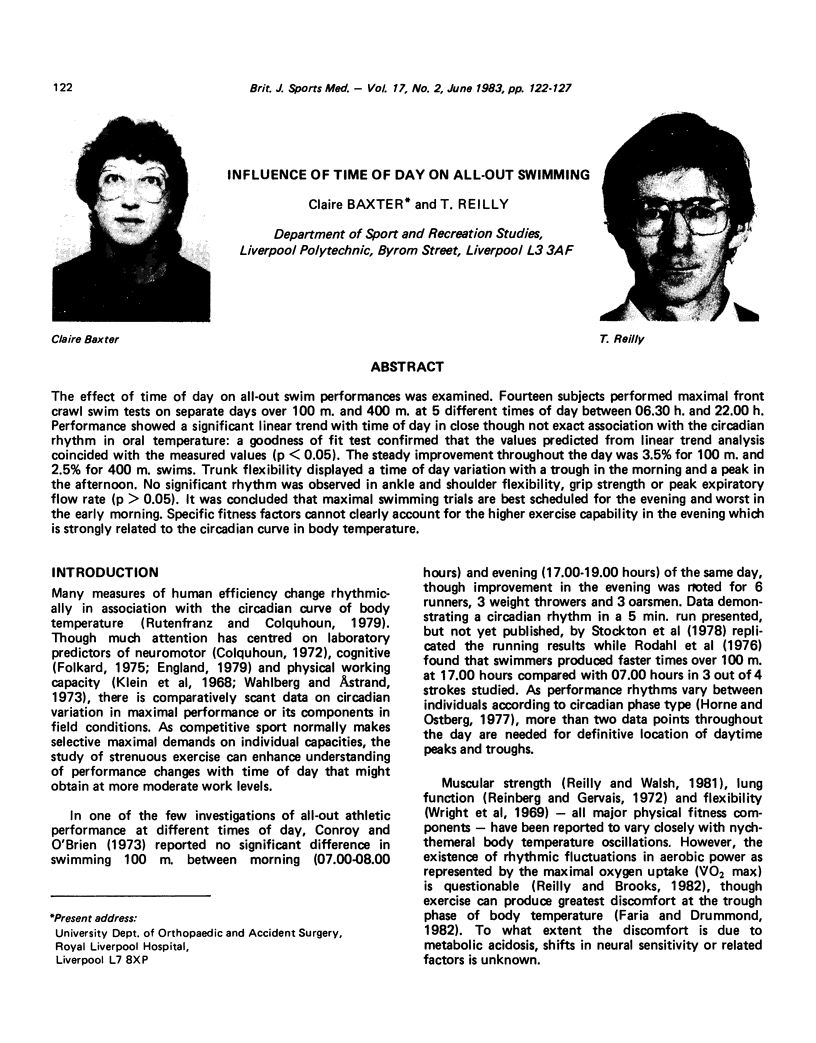
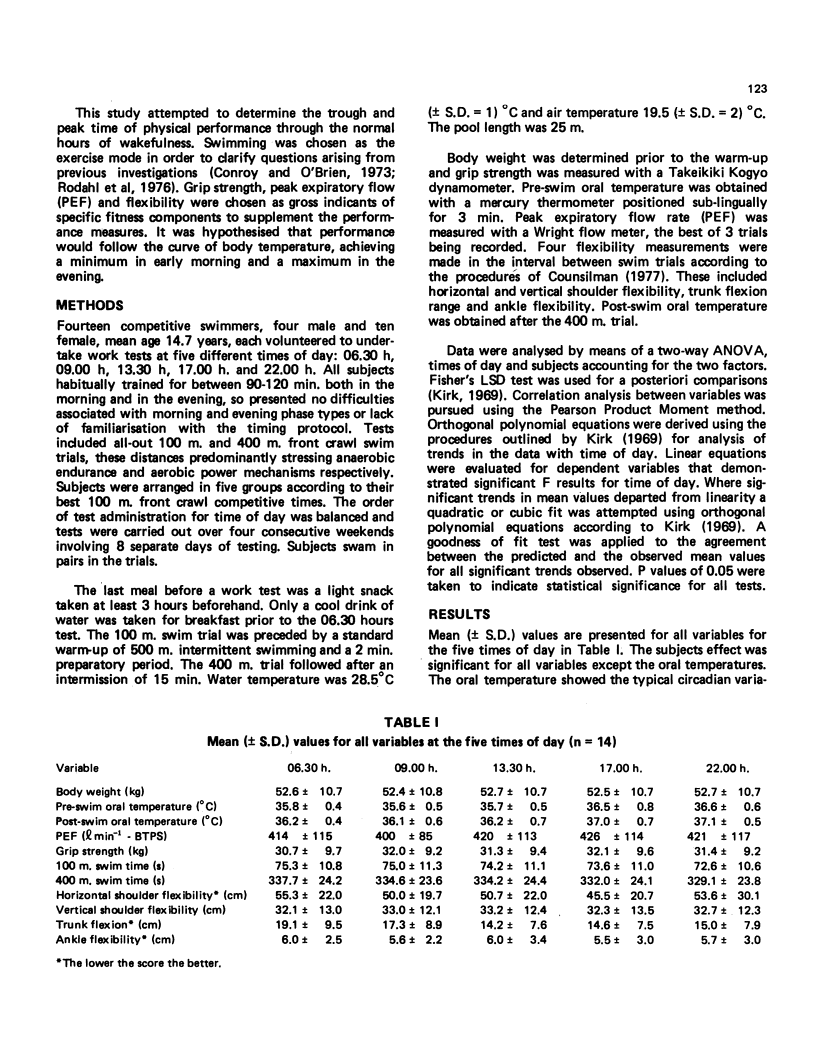
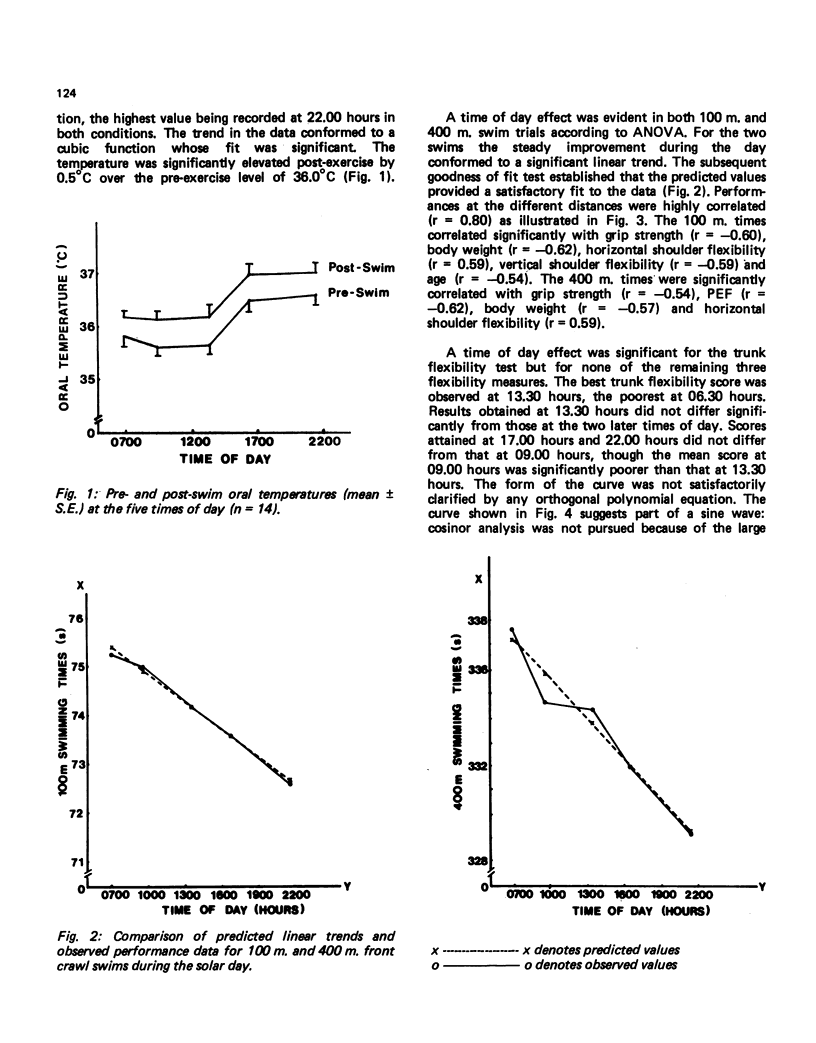
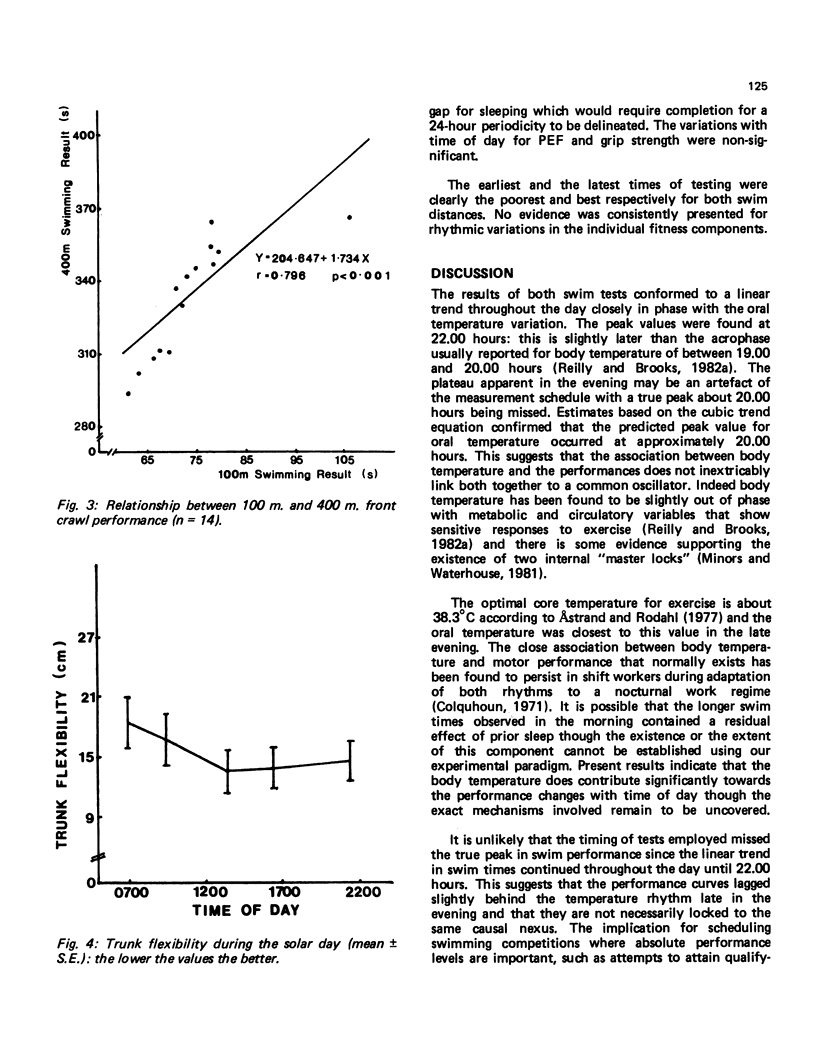
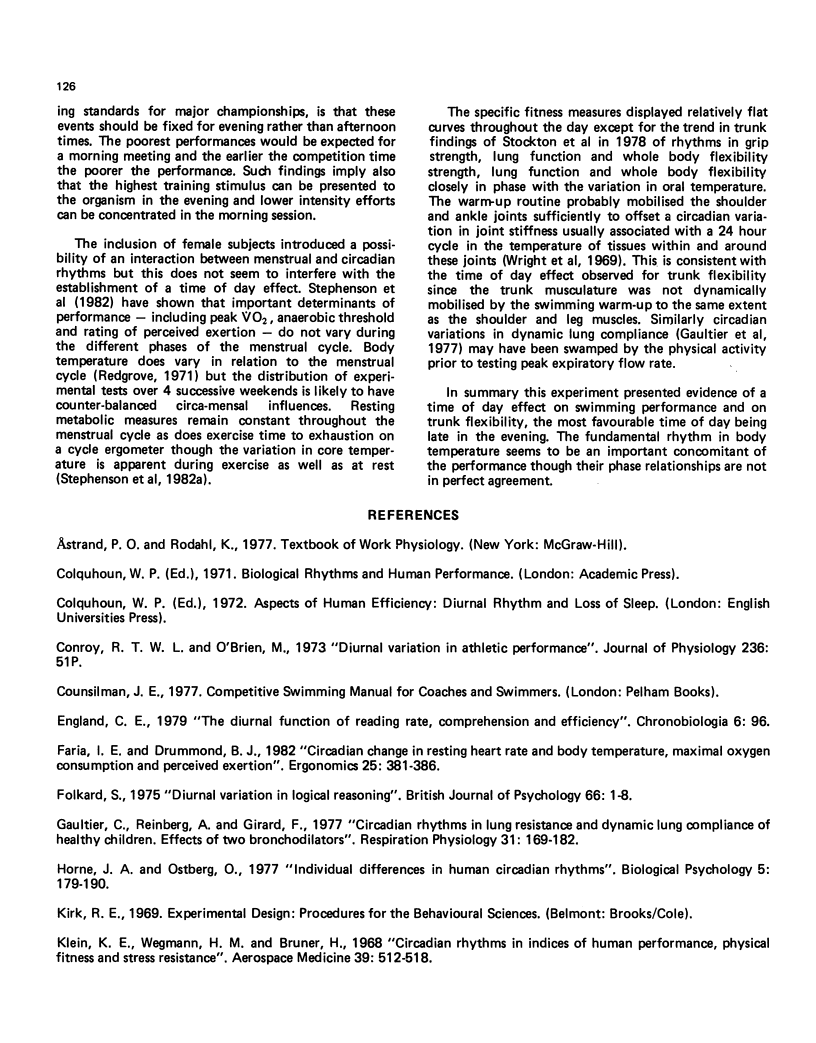
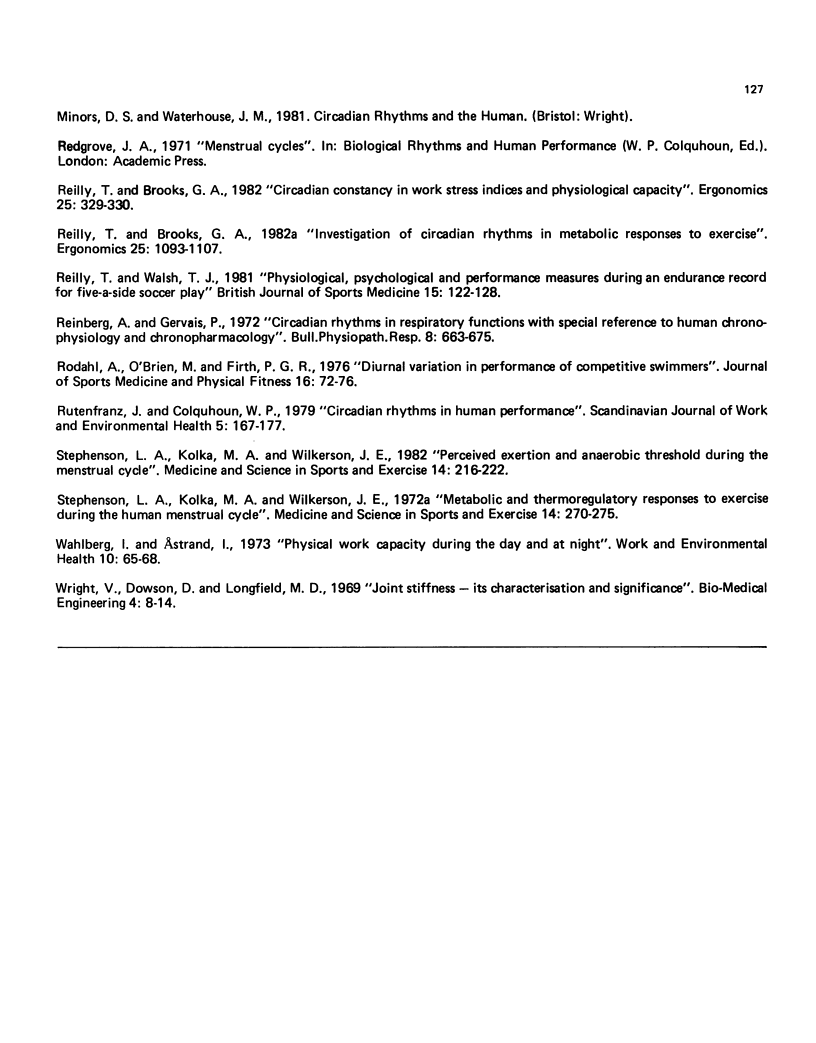
Images in this article
Selected References
These references are in PubMed. This may not be the complete list of references from this article.
- Faria I. E., Drummond B. J. Circadian changes in resting heart rate and body temperature, maximal oxygen consumption and perceived exertion. Ergonomics. 1982 May;25(5):381–386. doi: 10.1080/00140138208925004. [DOI] [PubMed] [Google Scholar]
- Gaultier C., Reinberg A., Girard F. Circadian rhythms in lung resistance and dynamic lung compliance of healthy children. Effects of two bronchodilators. Respir Physiol. 1977 Nov;31(2):169–182. doi: 10.1016/0034-5687(77)90100-1. [DOI] [PubMed] [Google Scholar]
- Horne J. A., Ostberg O. Individual differences in human circadian rhythms. Biol Psychol. 1977 Sep;5(3):179–190. doi: 10.1016/0301-0511(77)90001-1. [DOI] [PubMed] [Google Scholar]
- Klein K. E., Wegmann H. M., Brüner H. Circadian rhythm in indices of human performance, physical fitness and stress resistance. Aerosp Med. 1968 May;39(5):512–518. [PubMed] [Google Scholar]
- Reilly T., Brooks G. A. Investigation of circadian rhythms in metabolic responses to exercise. Ergonomics. 1982 Nov;25(11):1093–1107. doi: 10.1080/00140138208925067. [DOI] [PubMed] [Google Scholar]
- Reilly T., Walsh T. J. Physiological, psychological and performance measures during an endurance record for 5-a-side soccer play. Br J Sports Med. 1981 Jun;15(2):122–128. doi: 10.1136/bjsm.15.2.122. [DOI] [PMC free article] [PubMed] [Google Scholar]
- Reinberg A., Gervais P. Circadian rhythms in respiratory functions, with special reference to human chronophysiology and chronopharmacology. Bull Physiopathol Respir (Nancy) 1972 May-Jun;8(3):663–677. [PubMed] [Google Scholar]
- Rodahl A., O'Brien M., Firth R. G. Diurnal variation in performance of competitive swimmers. J Sports Med Phys Fitness. 1976 Mar;16(1):72–76. [PubMed] [Google Scholar]
- Stephenson L. A., Kolka M. A., Wilkerson J. E. Metabolic and thermoregulatory responses to exercise during the human menstrual cycle. Med Sci Sports Exerc. 1982;14(4):270–275. doi: 10.1249/00005768-198204000-00003. [DOI] [PubMed] [Google Scholar]
- Stephenson L. A., Kolka M. A., Wilkerson J. E. Perceived exertion and anaerobic threshold during the menstrual cycle. Med Sci Sports Exerc. 1982;14(3):218–222. [PubMed] [Google Scholar]
- Wright V., Dowson D., Longfied M. D. Joint stiffness--its characterisation and significance. Biomed Eng. 1969 Jan;4(1):8–14. [PubMed] [Google Scholar]




